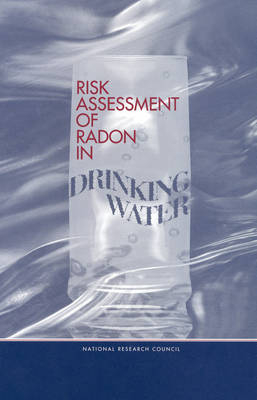
Risk Assessment of Radon in Drinking Water
National Academies Press (Verlag)
978-0-309-06292-3 (ISBN)
The Safe Drinking Water Act directs the U.S. Environmental Protection Agency (EPA) to regulate the quality of drinking water, including its concentration of radon, an acknowledged carcinogen.
This book presents a valuable synthesis of information about the total inhalation and ingestion risks posed by radon in public drinking water, including comprehensive reviews of data on the transfer of radon from water to indoor air and on outdoor levels of radon in the United States. It also presents a new analysis of a biokinetic model developed to determine the risks posed by ingestion of radon and reviews inhalation risks and the carcinogenesis process. The volume includes scenarios for quantifying the reduction in health risk that might be achieved by a program to reduce public exposure to radon.
Risk Assessment of Radon in Drinking Water, reflecting research and analysis mandated by 1996 amendments to the Safe Drinking Water Act, provides comment on a variety of methods to reduce radon entry into homes and to reduce the concentrations of radon in indoor air and in water. The models, analysis, and reviews of literature contained in this book are intended to provide information that EPA will need to set a new maximum contaminant level, as it is required to do in 2000.
Table of Contents
Front Matter
Public Summary
Executive Summary
1 Introduction
2 Baseline Information on Indoor Radon and Radon in Water in the United States
3 Transfer of Radon from Water to Indoor Air
4 Dosimetry of Ingested Radon and its Associated Risk
5 Dosimetry of Inhaled Radon and its Associated Risks
6 Molecular and Cellular Mechanisms of Radon Induced Carcinogenesis
7 Defining Key Variabilities and Uncertainties
8 Mitigation
9 Multimedia Approach to Risk Reduction
10 Research Recommendations
References
Glossary
A Behavior of Radon and Its Decay Products in the Body
B A Model for Diffusion of Radon Through the Stomach Wall
C Water-Mitigation Techniques
D Risks Associated with Disinfection By-products Formed by Water Chlorination Related to Trihalomethanes (THMs)
E Gamma Radiation Dose from Granular-Activated Carbon (GAC) Water Treatment Units
F EPA Approach to Analyzing Uncertainty and Variability
Index
Committee on Risk Assessment of Exposure to Radon in Drinking Water, National Research Council
1 Front Matter; 2 Public Summary; 3 Executive Summary; 4 1 Introduction; 5 2 Baseline Information on Indoor Radon and Radon in Water in the United States; 6 3 Transfer of Radon from Water to Indoor Air; 7 4 Dosimetry of Ingested Radon and its Associated Risk; 8 5 Dosimetry of Inhaled Radon and its Associated Risks; 9 6 Molecular and Cellular Mechanisms of Radon Induced Carcinogenesis; 10 7 Defining Key Variabilities and Uncertainties; 11 8 Mitigation; 12 9 Multimedia Approach to Risk Reduction; 13 10 Research Recommendations; 14 References; 15 Glossary; 16 A Behavior of Radon and Its Decay Products in the Body; 17 B A Model for Diffusion of Radon Through the Stomach Wall; 18 C Water-Mitigation Techniques; 19 D Risks Associated with Disinfection By-products Formed by Water Chlorination Related to Trihalomethanes (THMs); 20 E Gamma Radiation Dose from Granular-Activated Carbon (GAC) Water Treatment Units; 21 F EPA Approach to Analyzing Uncertainty and Variability; 22 Index
| Erscheint lt. Verlag | 24.7.1999 |
|---|---|
| Verlagsort | Washington |
| Sprache | englisch |
| Maße | 152 x 229 mm |
| Themenwelt | Medizin / Pharmazie ► Medizinische Fachgebiete ► Arbeits- / Sozial- / Umweltmedizin |
| Studium ► 2. Studienabschnitt (Klinik) ► Pharmakologie / Toxikologie | |
| Naturwissenschaften ► Biologie ► Ökologie / Naturschutz | |
| ISBN-10 | 0-309-06292-6 / 0309062926 |
| ISBN-13 | 978-0-309-06292-3 / 9780309062923 |
| Zustand | Neuware |
| Haben Sie eine Frage zum Produkt? |
aus dem Bereich


